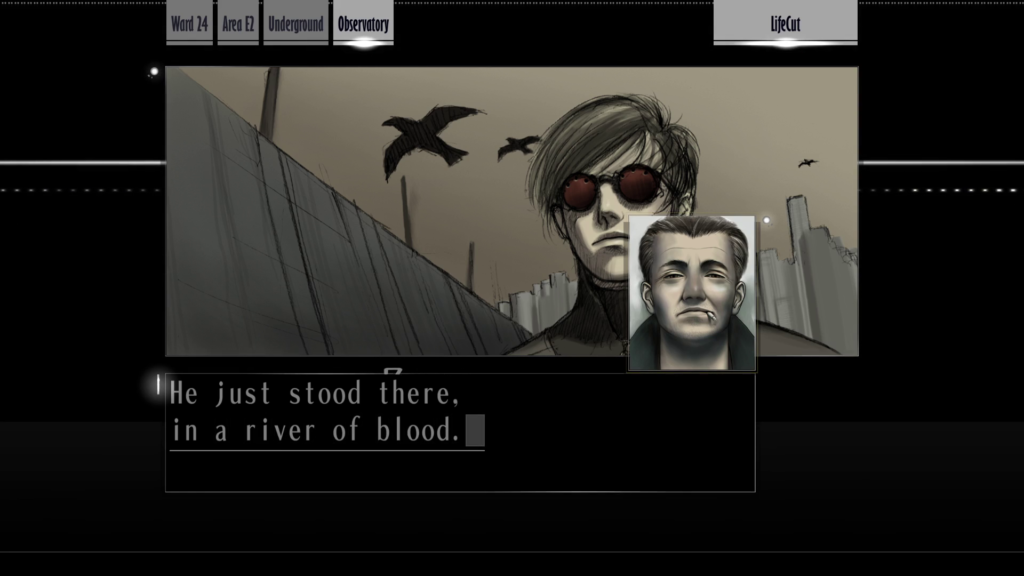Up to this point, the player has received a consistent portrait of Kamui: a depraved serial killer so powerful that he can single-handedly take out a squad of heavily armed men in full body armor. No wonder Kusabi made a name for himself by arresting the man. Kamui’s evil is so immense it renders him supernatural: a god or devil “completely overtaken by an evil darkness.” There is also that demonization of the mentally ill common in horror and thriller fiction.
However, partway through “Decoyman,” Akira and Sumio find Kamui bound and gagged in the closet of his former professional art partner Shimohira Ayame. This man is the “second Kamui,” Fujiwara Kamui. The TRO/CCO deliberately misidentify Fujiwara as this first Kamui of their propaganda.

The first Kamui is dropped from the narrative until “KamuiDrome,” which gives a detailed explanation of the Silver Case of 1979: “TRO/CCO Confederation Chairman [Nakane Ginji] was on his way to a symposium recording when he was assassinated outside the front door of TTV Station. […] The perpetrator, [Uehara Kamui], was immediately arrested upon commission of the crime.” This contradicts Kusabi in “LifeCut,” who states—in the pattern of increasingly revealing the “facts” behind the “truth”—that in the Silver Case, Kamui assassinated the entire leadership of the TRO/CCO inside the TTV Station Tower until he stood in a “river of blood.” It is like the telephone game.
In Tokio’s report that opens “LifeCut,” Fujiwara again embodies the role of a monstrous serial killer. Tokio dismisses Fujiwara as an attention-seeking “crazy son of a bitch” retaliating for Furuya’s attempt to become the new Kamui.
The outline of the Silver Case Kamui, the horrific pathological serial killer, is also present in Case #4.5: Face. Given the more conventional nature of Face, its more important contradictions, and that it comes from a different writer, Korekata Naoko, I do not necessarily think it fits into the narrative pattern of The Silver Case. However, this Kamui is worth addressing. The medical student Sawaguchi Minato, a “Kamui copy” from the Kamui Maspro, becomes the serial killer “Jack the Ripper” as a result of a conflict between his personality and the programmed persona. The story also leans far more into the unfortunate trope of mentally ill people as killers than Suda or Ooka’s storylines. Minato is not activated by the syndicates. Neither is he explicitly death-filed, never seeming to go bald. While his illness results from the trauma of society rather than from a personal moral failing in accord with the broader metaphor of The Silver Case, Minato is nonetheless destructive explicitly because of a mental illness. He states he has dissociative identity disorder and calls himself “broken”:
“There’s something inside me that’s not me, so I’m always getting confused. I don’t know what to do. […] Somebody else writes in my diary without me knowing, too. They tell me to do all these things, and they write it there. But it’s not my fault. It’s not my fault that I do all these things. It’s because I’m broken.”

Continuing the mentally ill sicko characterization, Minato claims his motive is that he kills people he thinks can “fix” him but who fail. Seeking to save him, Sakura advises seeking a “specialist doctor.” Finally, rejecting attempts at helping him, Minato dies by suicide to stop the Jack the Ripper persona. This is less the Silver Case Kamui, a supernatural monster, and more a conventional mentally ill serial killer in a conventional murder mystery.